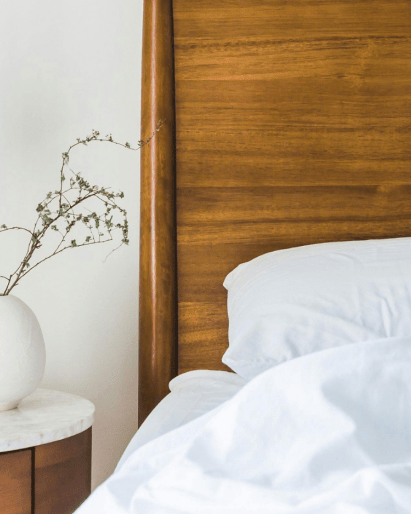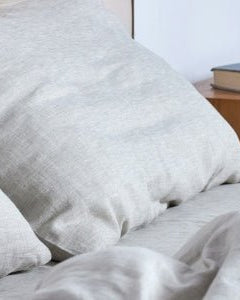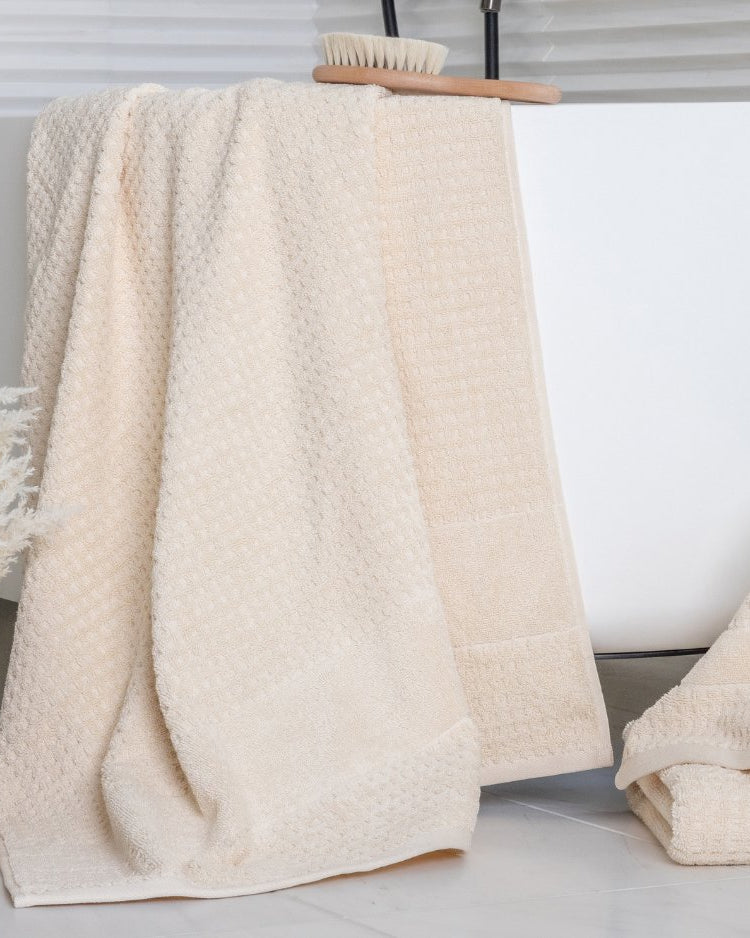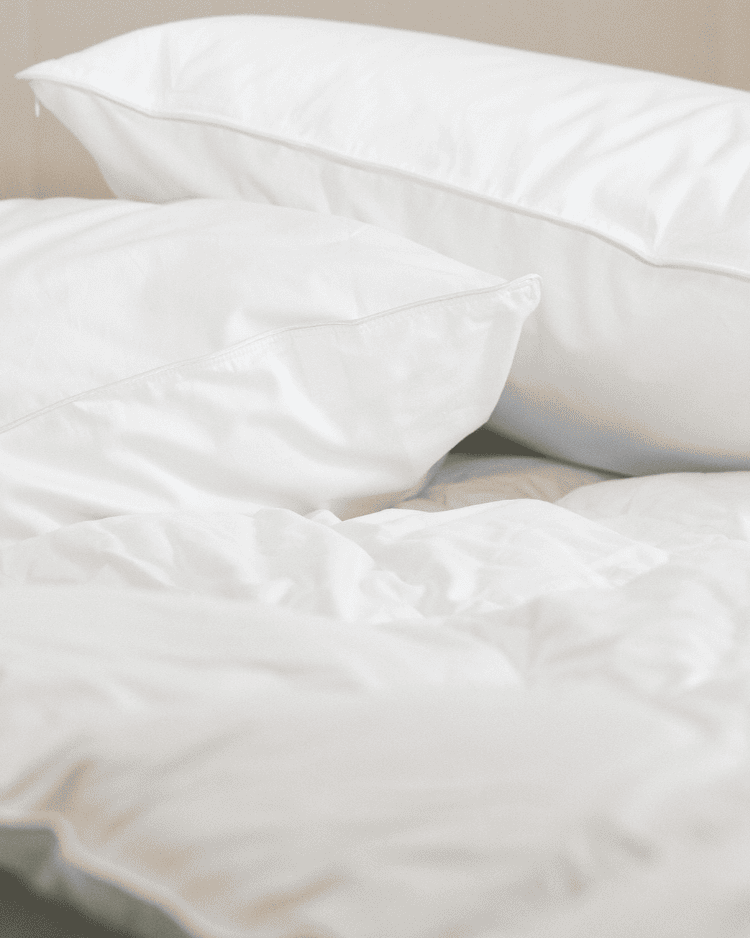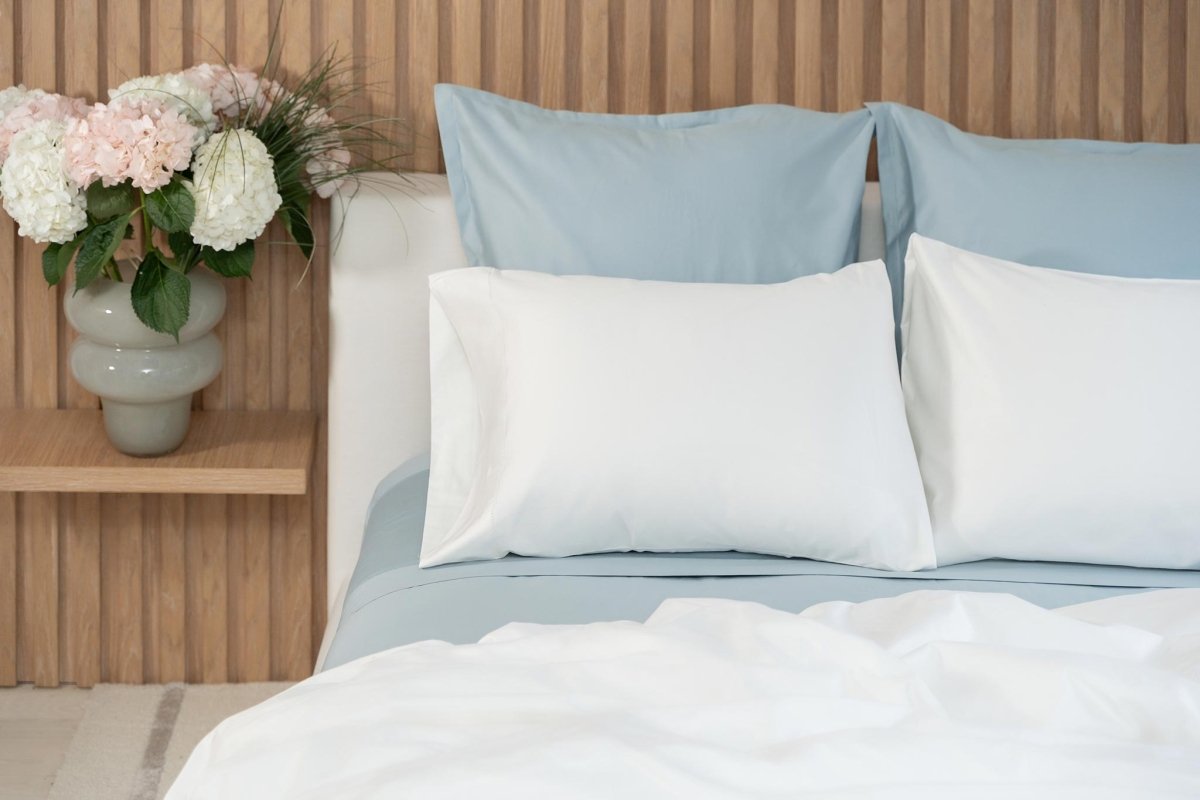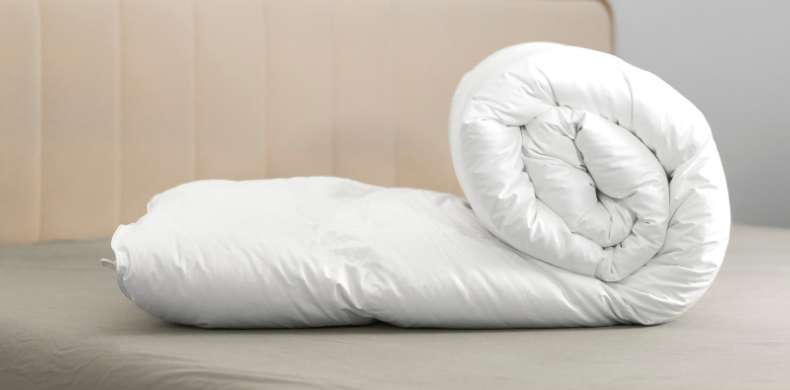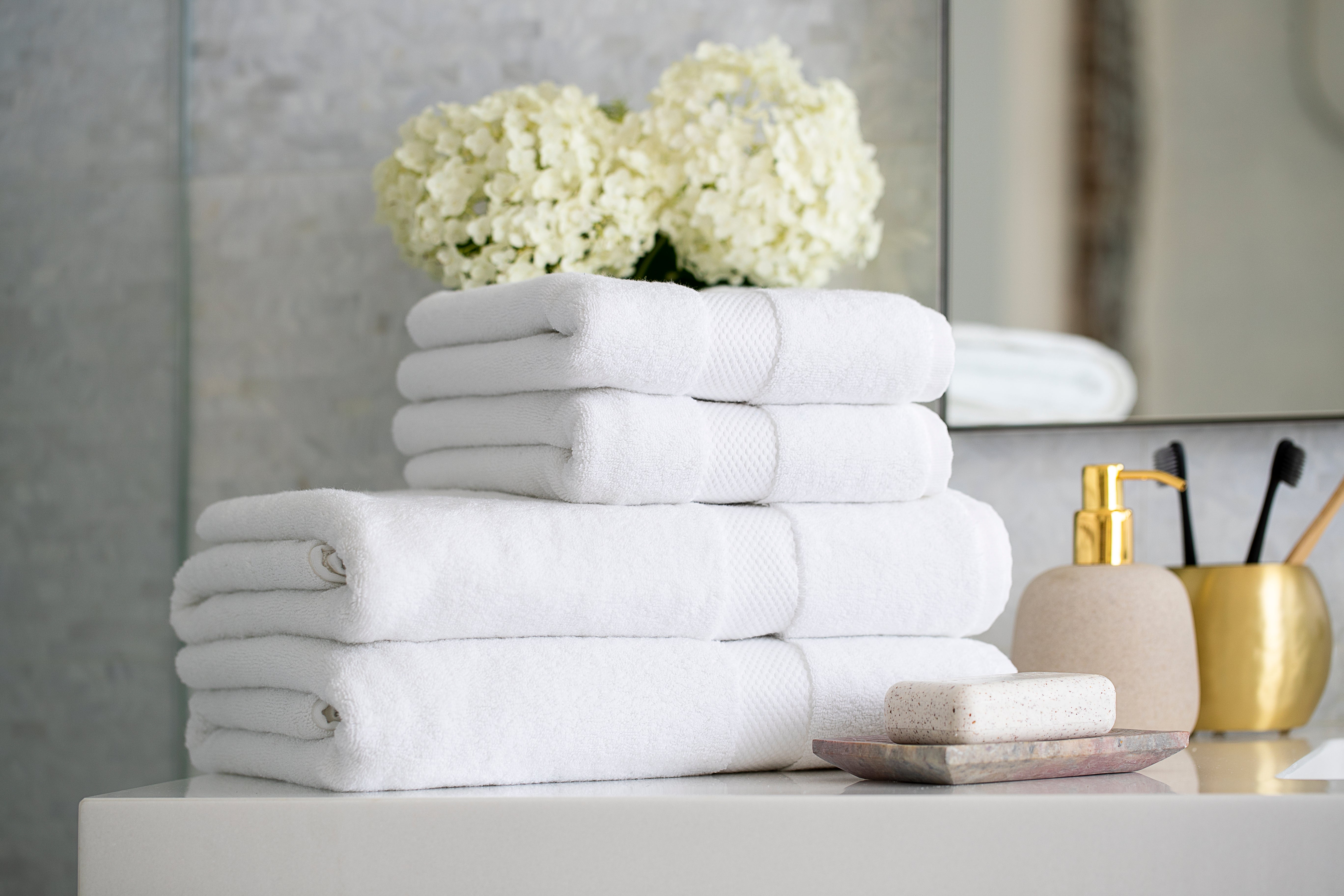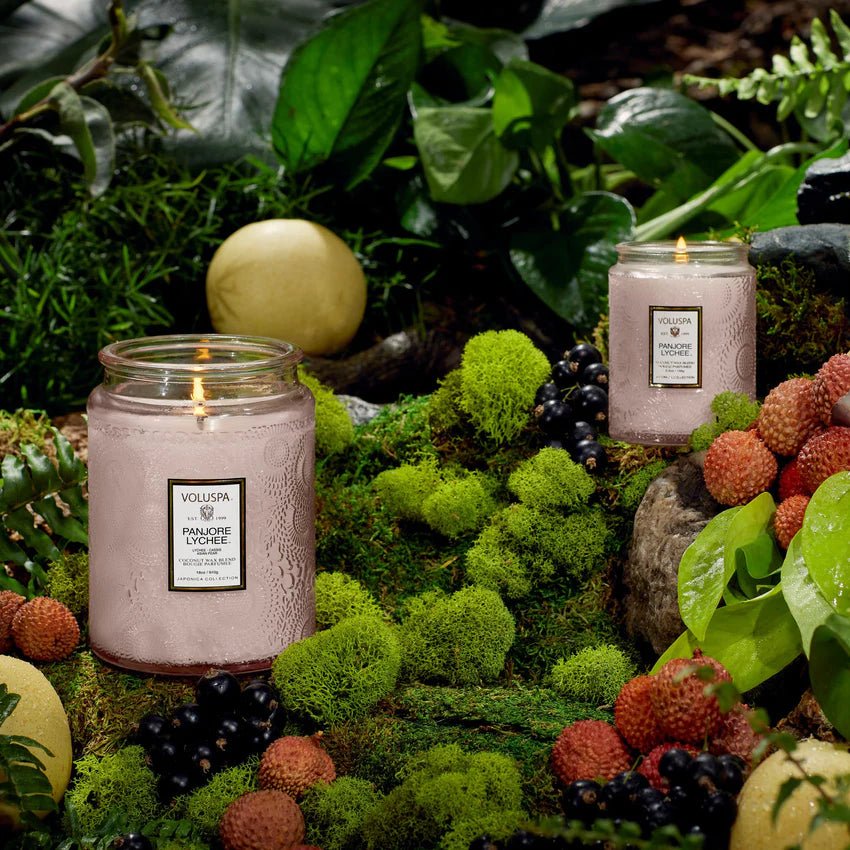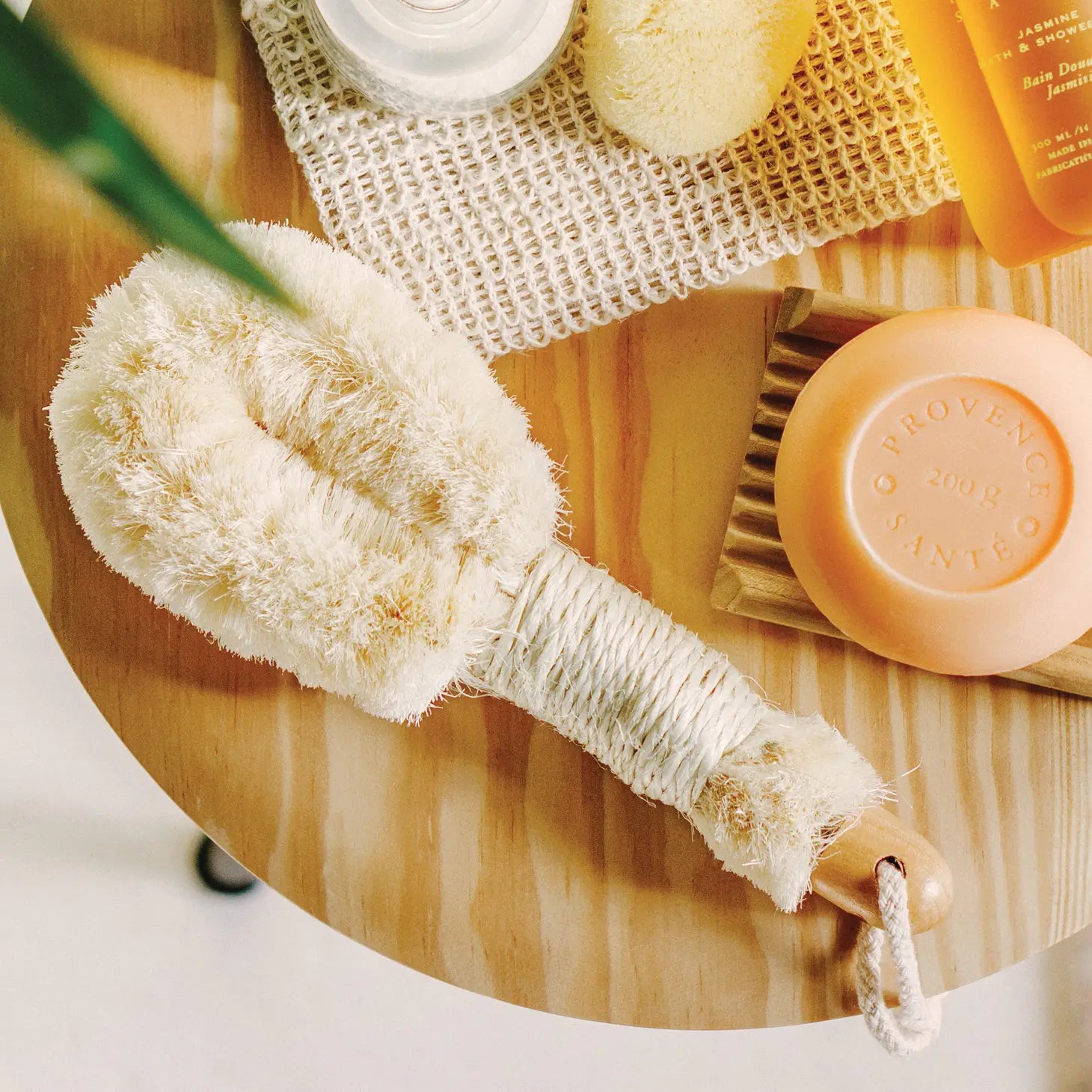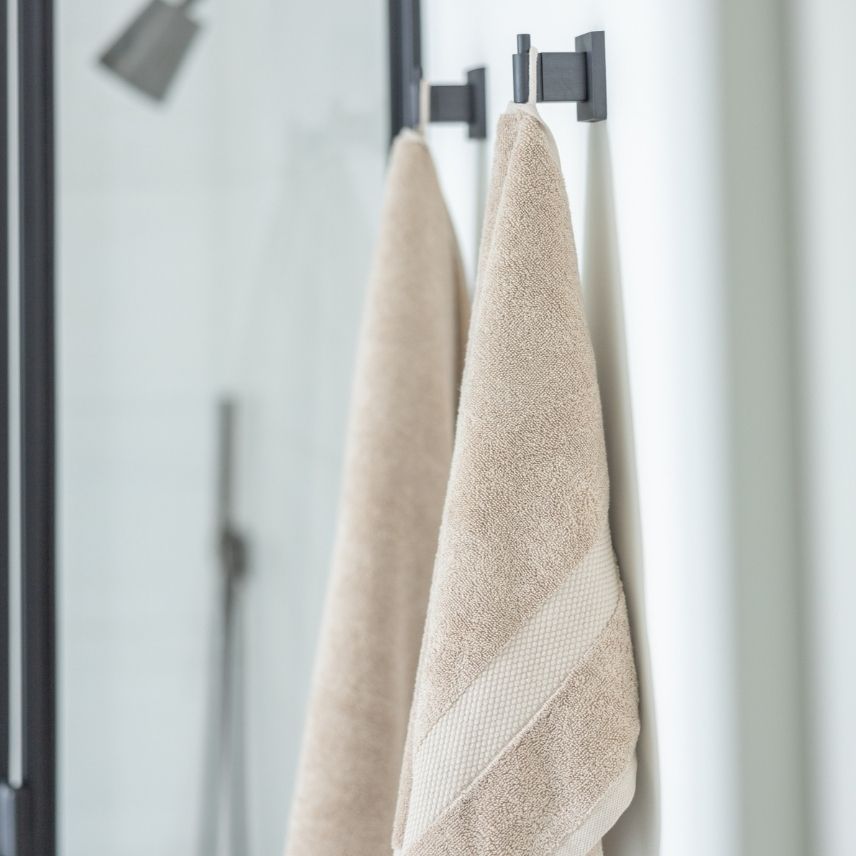Navigating the world of bedding materials can be overwhelming, but fear not – you're not alone! With many options offering benefits and considerations, it's easy to feel lost in the sea of choices.
As you embark on your bedding journey, you'll likely encounter terms that may seem familiar but have never been fully explored. From sateen to percale, the distinctions between these materials can sometimes blur, leaving shoppers needing guidance on which direction to take.
But don't worry! Understanding the differences between bedding fabrics is not as complicated as it may seem. In this comprehensive guide comparing percale vs. sateen, we'll break down what each term signifies and how they differ. This knowledge will empower you to confidently choose the luxurious bedding that suits your needs.

When shopping for textiles, it's crucial to consider the weave employed by the manufacturer. While the choice of raw materials, such as cotton, flax, or bamboo, plays a significant role in determining the characteristics of the final product, the weave also holds considerable importance.
Understanding Weave:
Woven fabrics originate from threads or yarns arranged in specific patterns to produce materials of varying thicknesses and strengths. Like artisans craft baskets by intertwining natural reed or grass fibers, bedding manufacturers weave luxury fibers to create durable and soft textiles.
Each fabric type boasts its distinct weave technique and style. Some weaves feature a more open construction with a coarser texture, while others are tighter and offer a softer feel. How the threads are interlaced dictates the appearance and feel of a weave.
Weave and Thread Count:
While many consumers associate a higher thread count with softer or superior fabric, thread count is just one aspect among several that contribute to material quality. Traditionally, thread count refers to the number of threads woven into each inch of fabric. However, softness and strength are also influenced by the quality of raw materials and the weave style. This is why comparing percale and sateen is more about weave than thread count.
What is Percale?

Percale is a common type of weave characterized by a pattern of one thread over and one thread under. Percale sheets can be crafted from various materials, including organic cotton, polyester, or blends. Therefore, when shopping for percale sheets, the weave type provides critical information rather than the raw material.
Percale sheets are an excellent choice for those seeking bedding suitable for hot sleepers. Their unique weave structure remains incredible, offering a crisp feel each time you shift in bed. Opting for percale sheets made from organic cotton ensures sustainability and a breathable, comfortable sleep environment.
What is Sateen?

Sateen is a widely favored woven fabric known for its silky texture, achieved through its distinct weaving style. Typically, sateen fabrics are woven with one thread placed underneath and three to five threads positioned above. This technique produces a soft, moderately tightly woven fabric with a subtle sheen and excellent wrinkle resistance.
Suppose you often feel chilly at night and crave an exceptionally soft and cozy sheet. In that case, sateen bedding will surely delight you with its luxurious feel against your skin. Opting for sateen sheets made from 100% long-staple Egyptian cotton enhances the indulgent experience, providing an extra level of luxury.
Exploring the differences between Sateen and Percale
Now that we've explored how weave and raw materials combine to produce distinct bedding textures, let's compare the advantages and disadvantages of sateen and percale for your bedroom.
Percale vs. Sateen for Sleeping Comfort

Percale sheets are favored by sleepers who tend to get too warm during the night, those residing in warmer climates, and individuals who prefer consistent bedding throughout the year.
On the other hand, sateen sheets are perfect for sleepers with sensitive skin who desire a silky-smooth feel. The tighter weave of sateen retains heat more effectively than percale, making it ideal for those who feel more relaxed at night. However, sateen may not be the most suitable option for hot sleepers.
Wether you opt for percale or sateen bedding, choosing products woven from high-quality, 100% long-staple Egyptian cotton is essential. This ensure that your decision between percal and sateen is primarily based on your preferred texture and sleep style rather than the raw material.
Percale vs. Sateen for Durability and Care
While percale softens with each wash, akin to a beloved, well-worn t-shirt, sateen may gradually lose some of its satiny sheen over time. Additionally, sateen is more susceptible to pilling than percale, emphasizing the importance of adhering to care instructions to preserve the quality and longevity of your bedding.
Both percale and sateen are durable options under regular use, as long as washing machines are not overloaded and additives like fabric softener are avoided, which can degrade fibers over time.
Sateen exhibits less wrinkling than percale, making it the preferred choice for those seeking wrinkle-free sheets straight out of the dryer.
When crafted from organic cotton, both percale and sateen are relatively low-maintenance, as they are machine washable and suitable for tumble drying.

In summary, choosing between percale and sateen bedding is about finding what feels best. Whether you prefer the crisp, breathable feel of percale or the smooth, luxurious touch of sateen, both options offer comfort and quality. With proper care, your sheets will continue to provide cozy nights of restful sleep. So, go ahead and indulge in the bedding that best suits your style and sleep needs.

